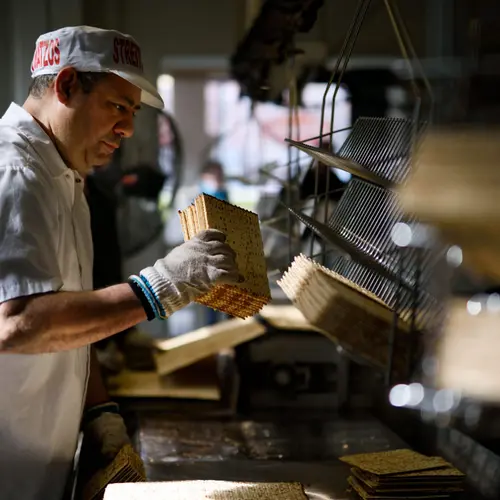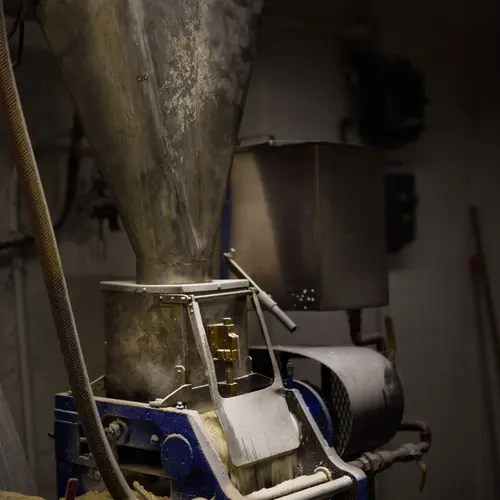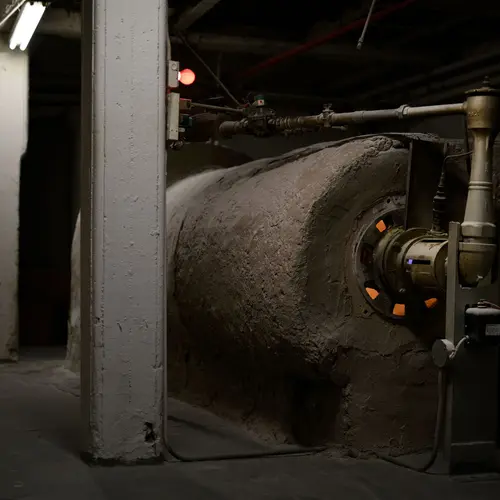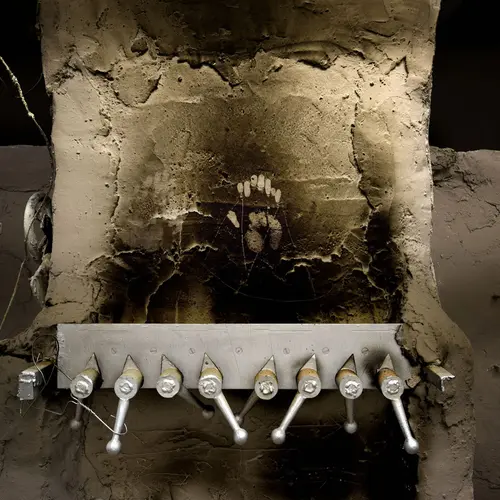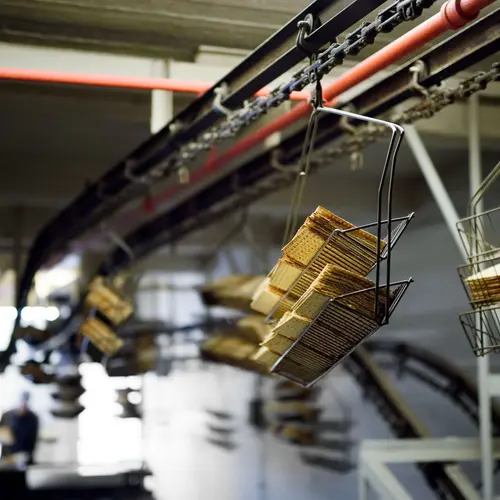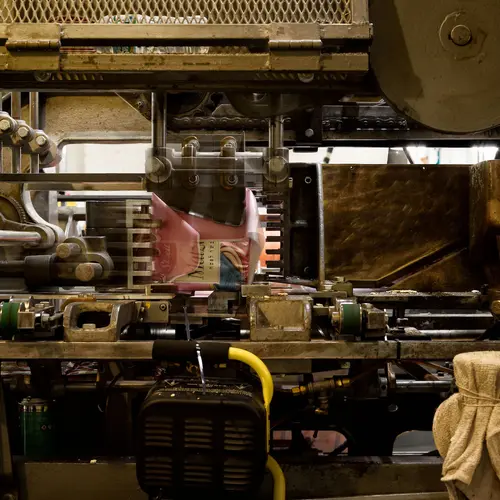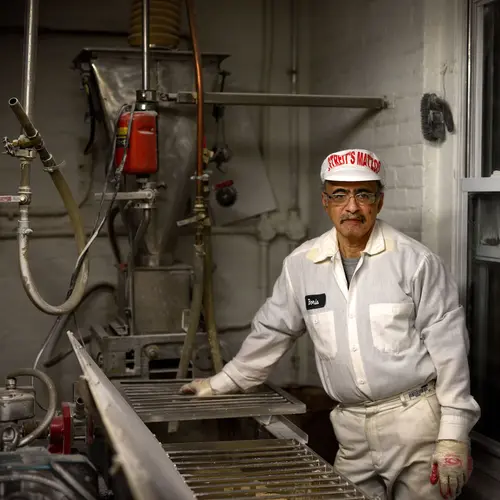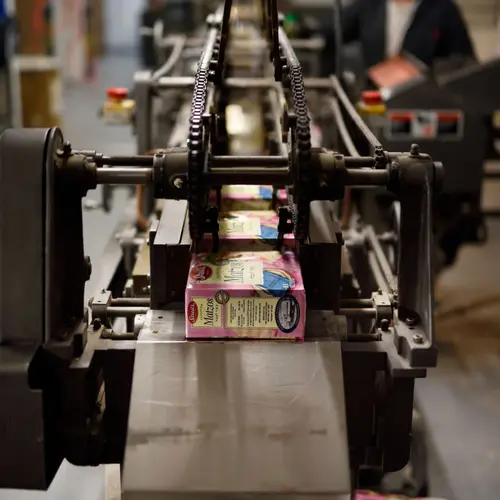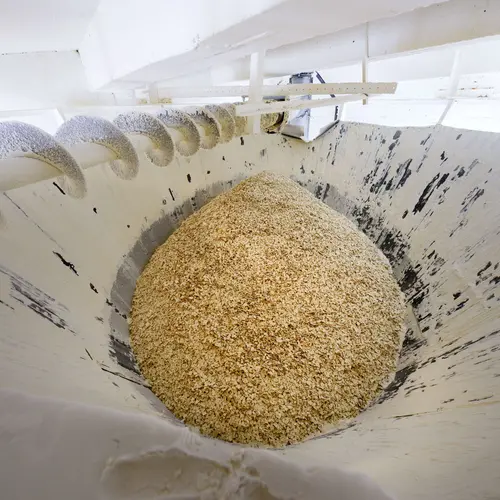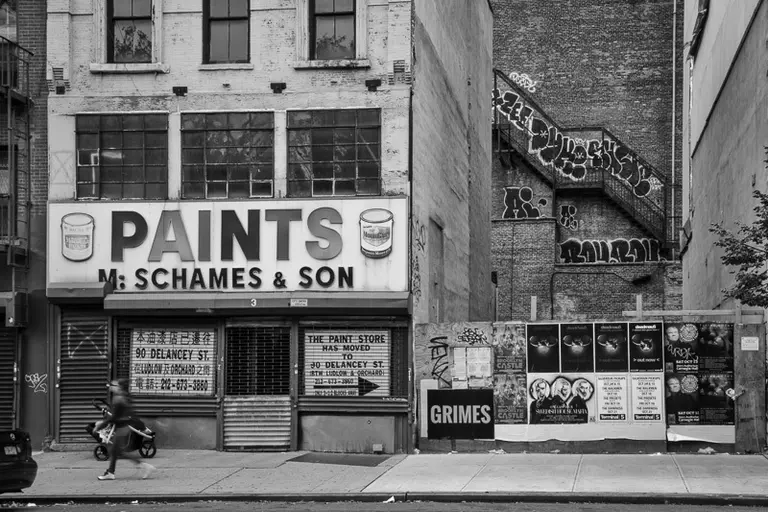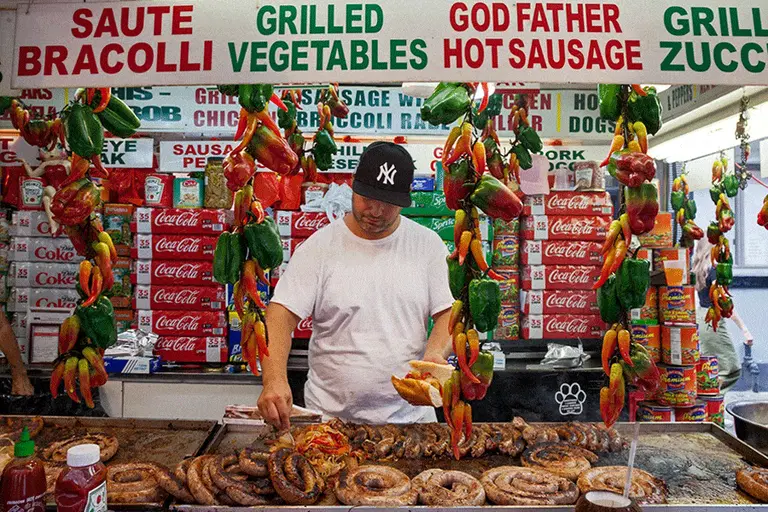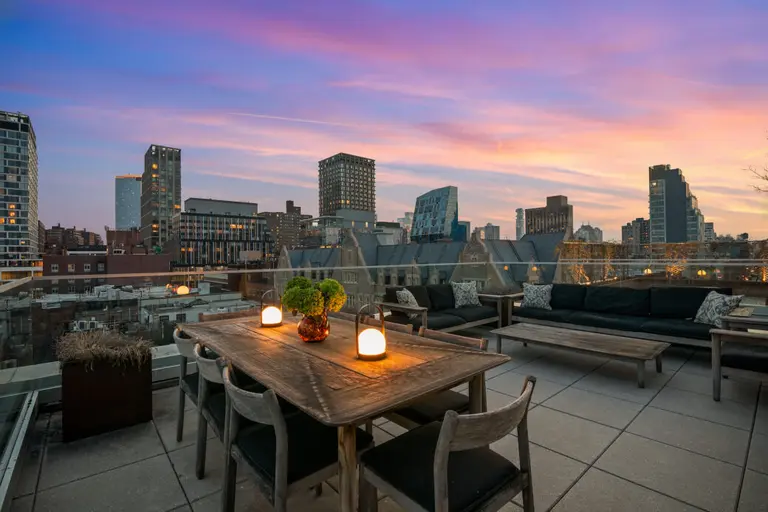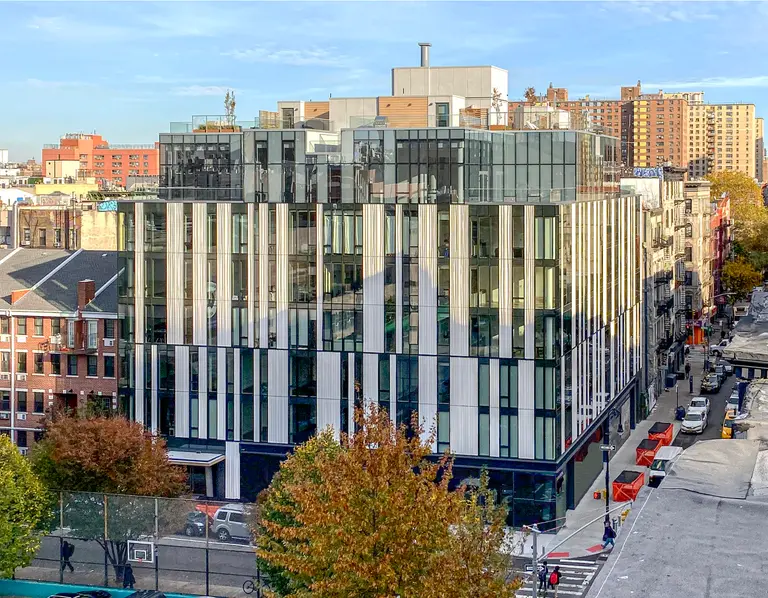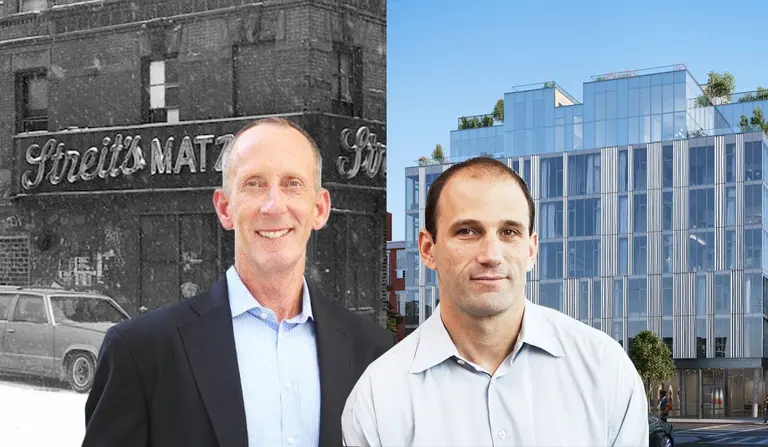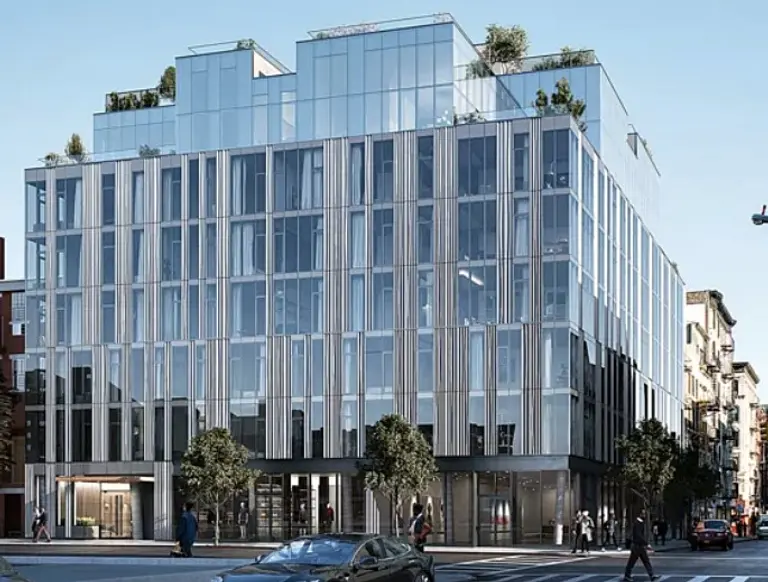The Urban Lens: Capturing the final days of the Lower East Side’s shuttered Streit’s Matzo Factory
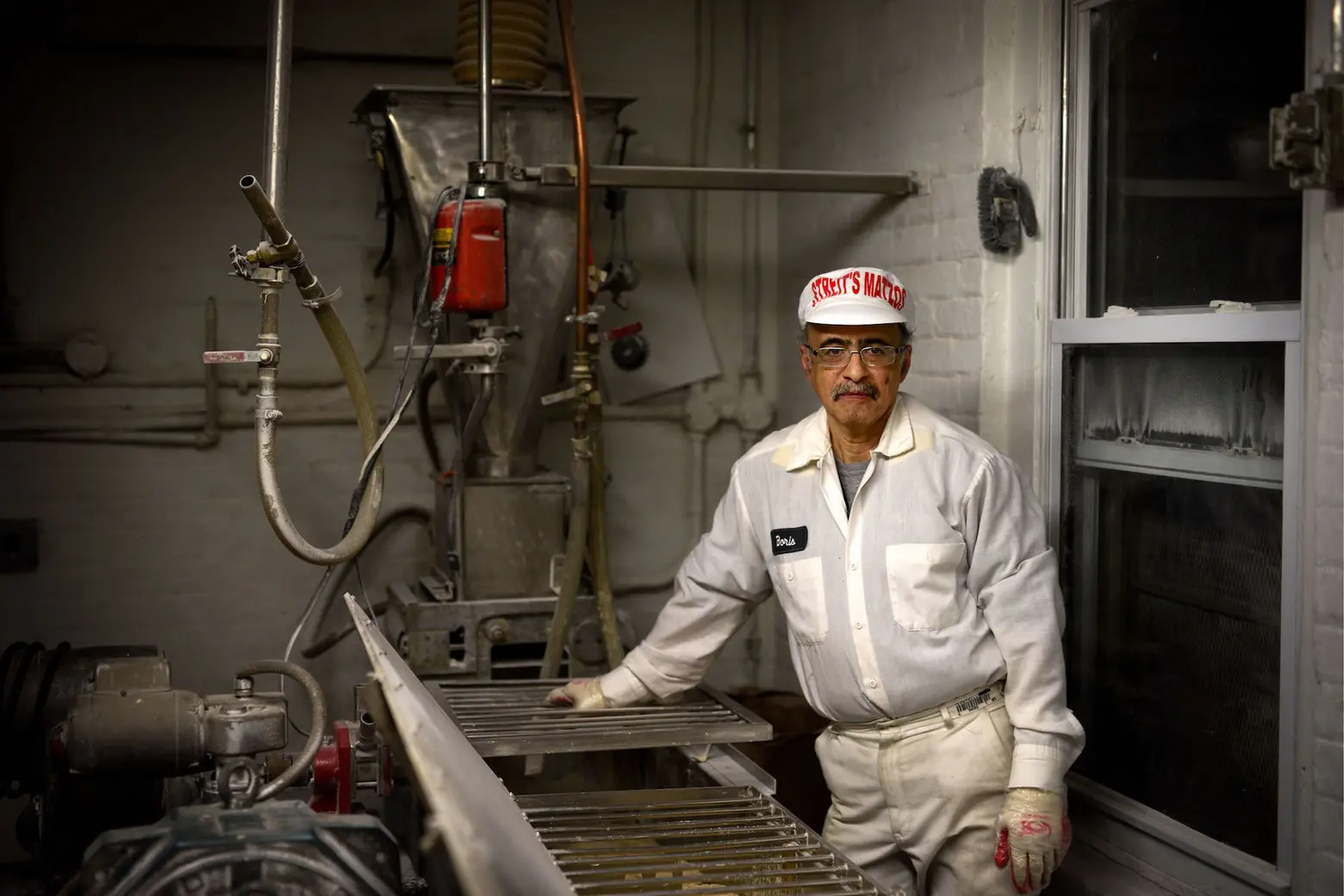
Ramon, Streit’s Mazo; © Joseph O. Holmes
6sqft’s series The Urban Lens invites photographers to share work exploring a theme or a place within New York City. In this installment, Joseph O. Holmes shares his photo series of Streit’s Matzo Factory, the now-shuttered LES institution. Are you a photographer who’d like to see your work featured on The Urban Lens? Get in touch with us at [email protected].
In 2015, after nearly 90 years in operation, Streit’s Matzo Factory on the Lower East Side closed its doors. But before the property’s new owners demolished the site to make way for luxury condos, the Streit family let photographer Joseph O. Holmes tour the space. Through photos of the four-building factory, its old-school machinery, and its workers, Joseph captured the final days of this neighborhood icon. “If I hadn’t shot it, most of it would be forgotten,” Joseph told 6sqft.
Although Streit’s closed more than four years ago and condo building 150 Rivington has since risen in its place, Joseph’s poignant photos were given new life this month. The developer purchased some of the photos to hang permanently in the lobby of 150 Rivington as an ode to the building’s industrial roots. Ahead, hear from Joseph about what it was like to photograph the maze-like factory and why he finds old machines so beautiful.
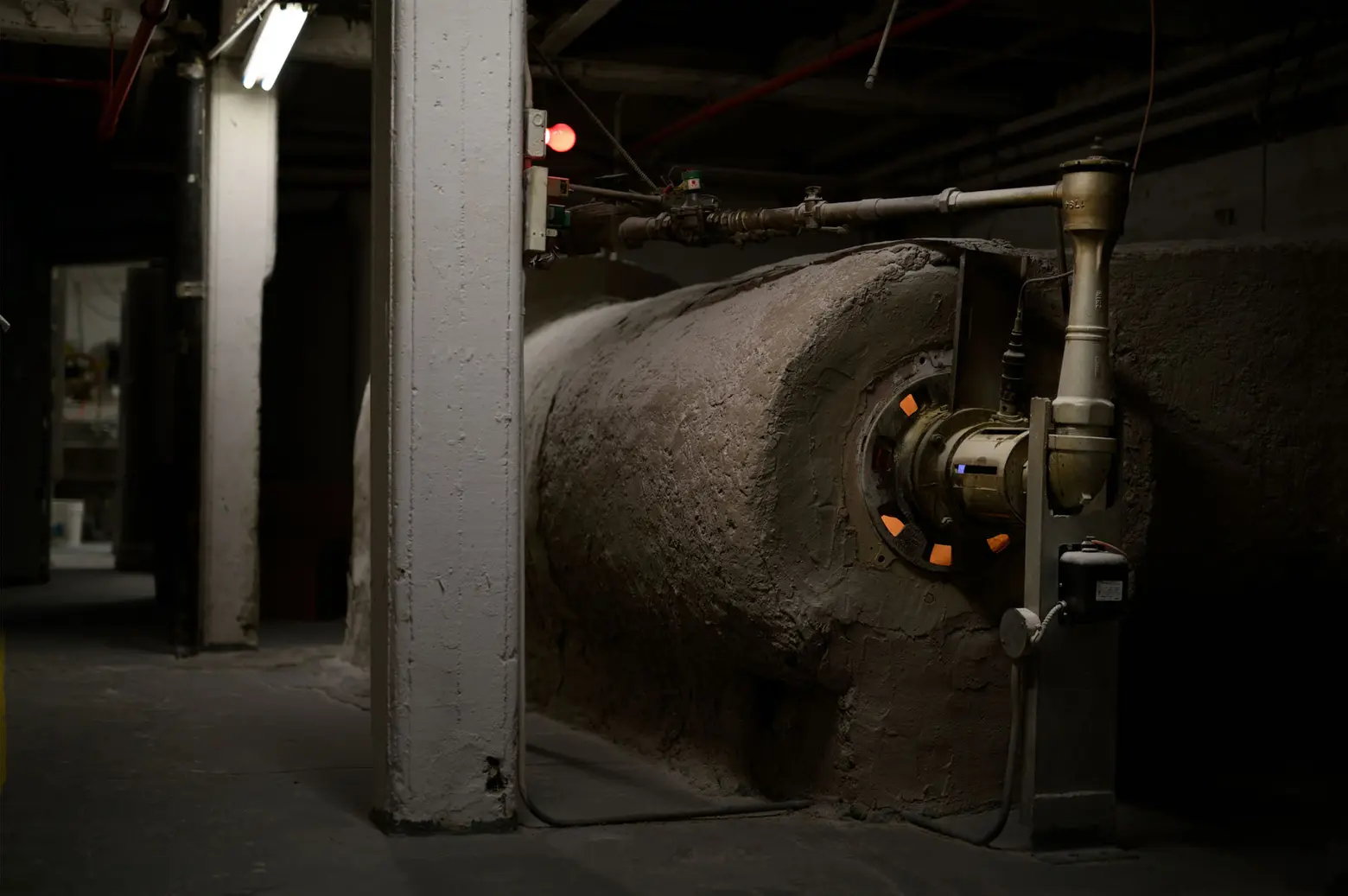
Lit Furnace; © Joseph O. Holmes
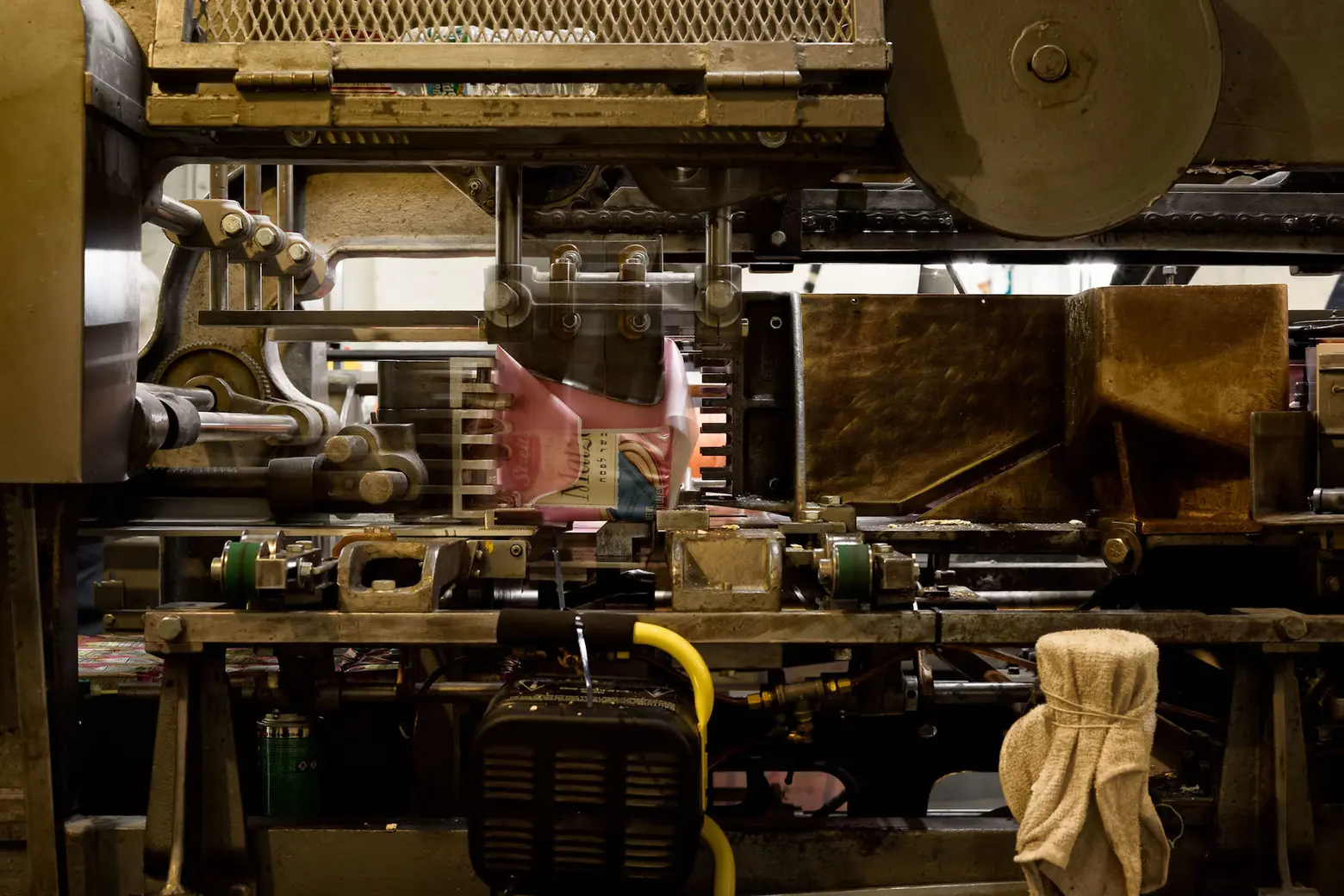
Second Floor 5lb Wrapping Machine; © Joseph O. Holmes
Tell us about yourself. When did you first get into photography?
My father was a serious photo hobbyist, and when I was young he built a darkroom in our home (My Father’s Darkroom). When I reached eighth or ninth grade, he showed me how to use his SLR and how to develop film and prints in his darkroom, and I’ve been shooting ever since.
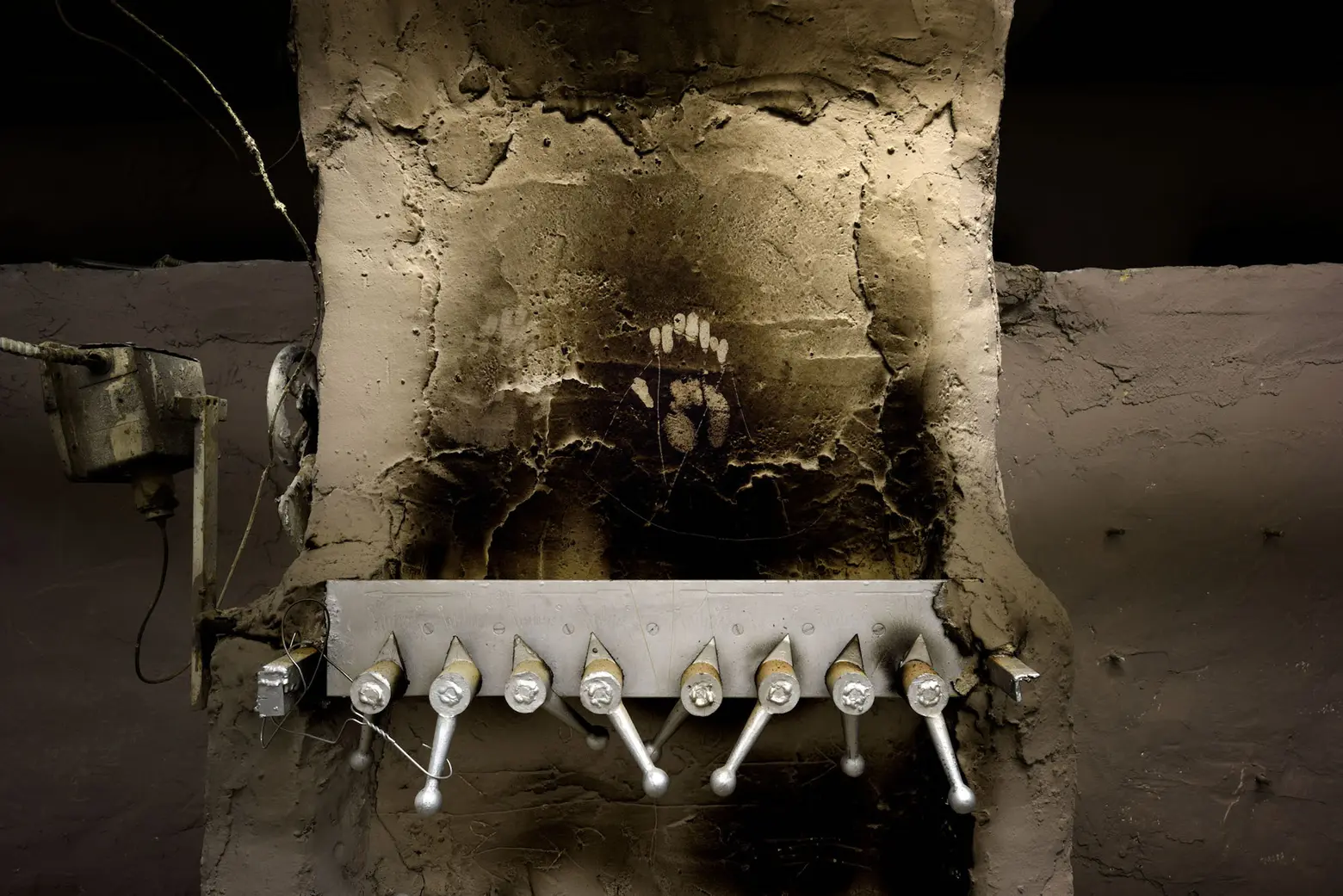
Third Floor Oven Controls; © Joseph O. Holmes
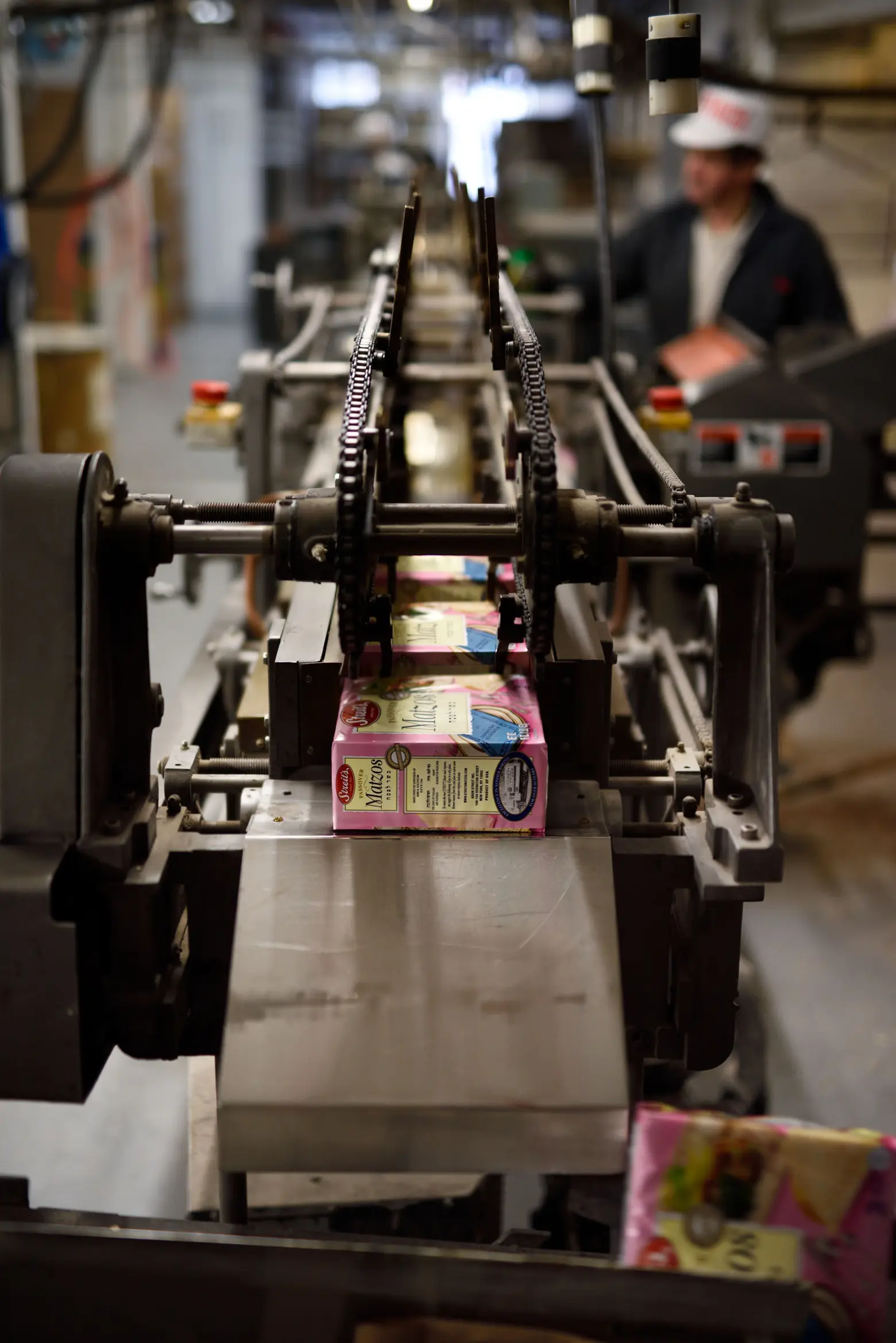
Second Floor 1lb Wrapper; © Joseph O. Holmes
Can you tell us how you gained access to Streit’s Matzo factory?
In 2015 my friend photographer Isa Leshko read an article reporting that the Streit’s factory was planning to leave the Lower East Side. She remembered my work shooting similar environments — projection booths, machine shops — and she dropped me a line: “I saw this article and immediately thought of your work.” So I simply took the subway to the Streit’s plant on Rivington Street and spent a couple of minutes with the head of the company, explaining my work and asking to photograph the plant for a few days.
He okayed the idea. It was that simple. I’d show up in the morning with my camera and tripod, check in with Rabbi Kirschner, and photograph until I was exhausted. I thought I’d spend two or three days there, but five weeks later I was still shooting the place.
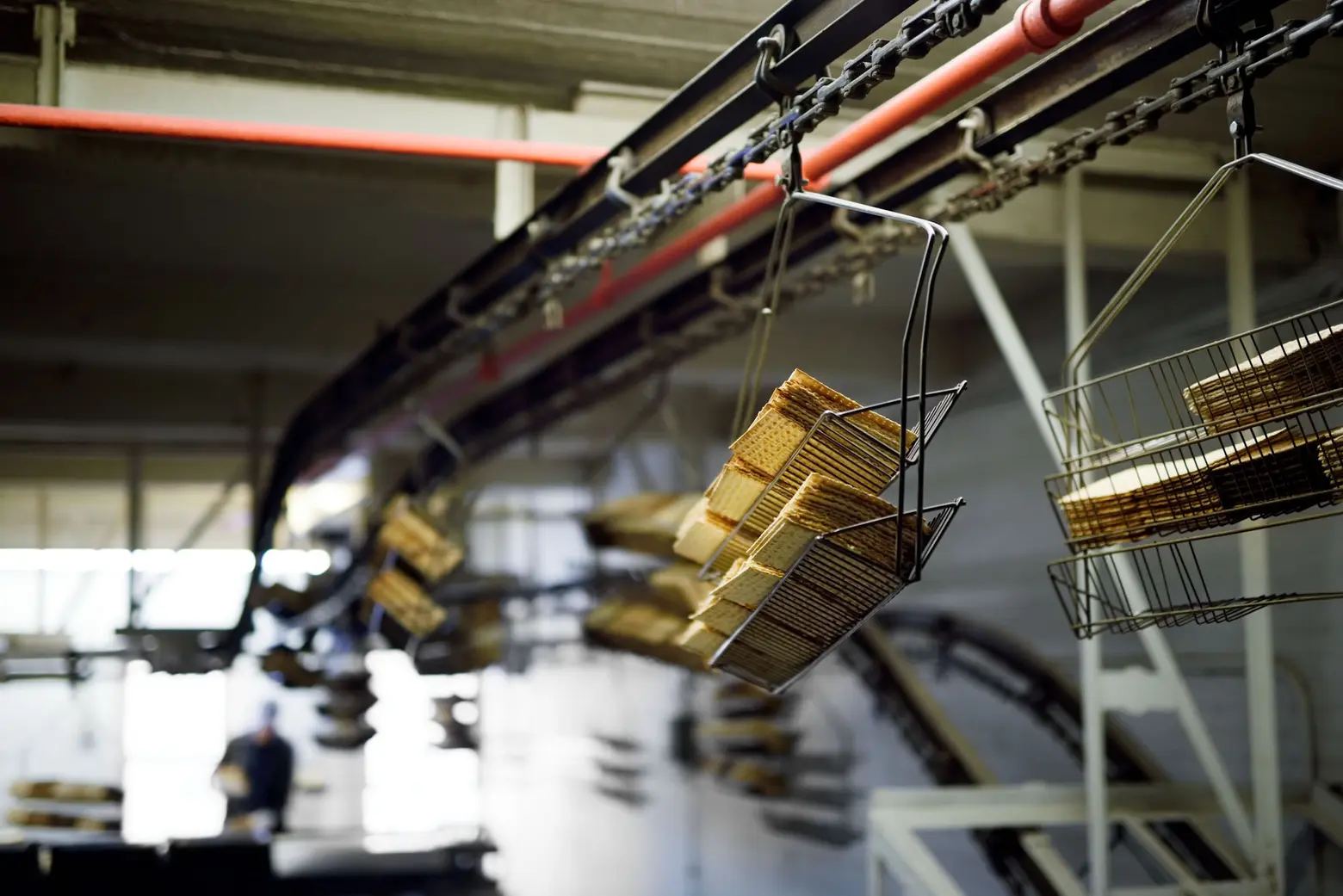
Third Floor Conveyor; © Joseph O. Holmes
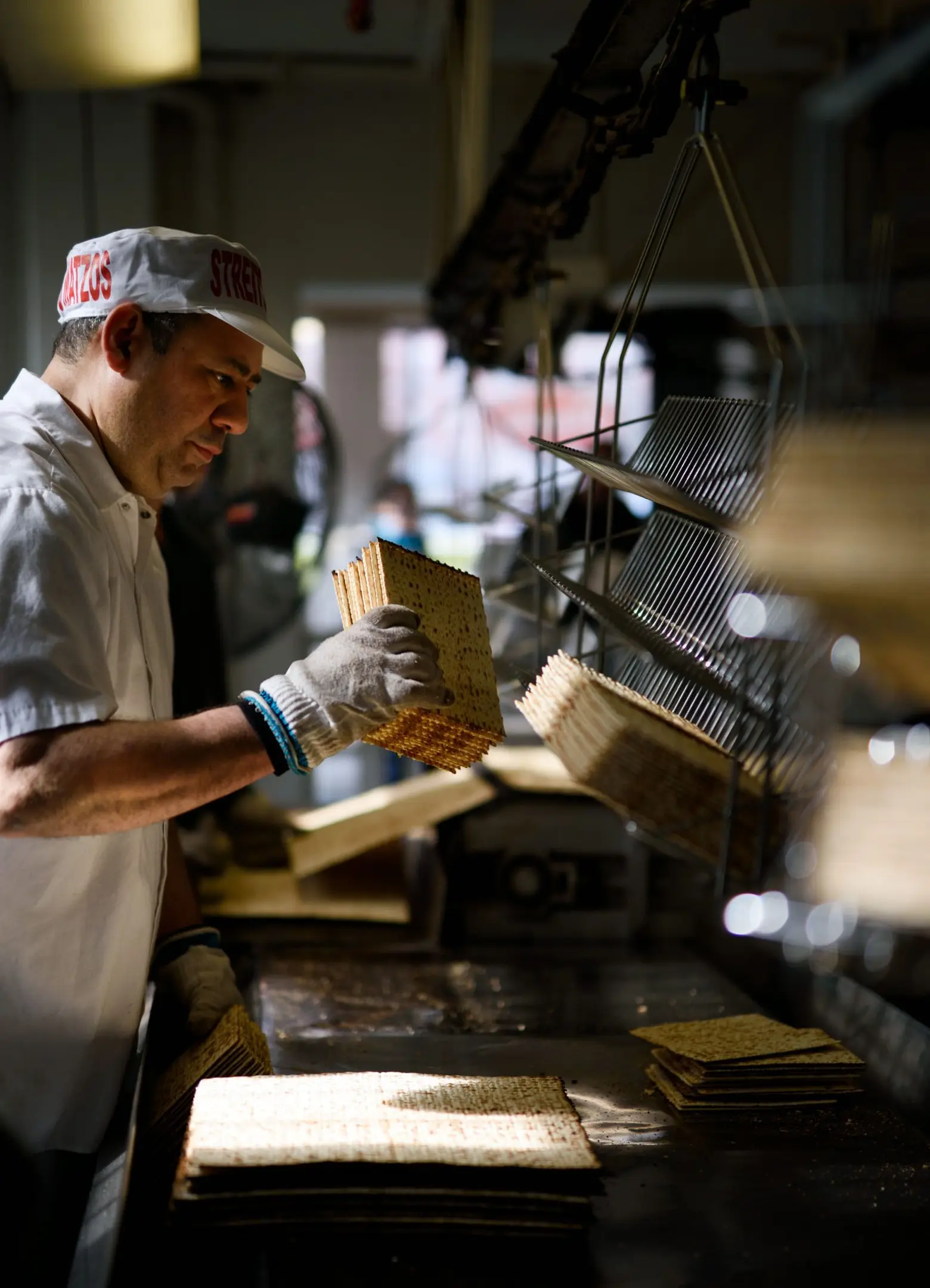
First-floor oven exit loading; © Joseph O. Holmes
Why did you want to photograph its final days?
I’m enchanted by the beauty of old machines and old ways, and it’s always very sad to discover that a beautiful place has disappeared forever. I knew I had one chance to photograph the Streit’s factory. Strangely, although it was common knowledge that the factory would soon close, I was apparently the only one to take the time to shoot high-quality images of the machines and the space and the workers. If I hadn’t shot it, most of it would be forgotten.
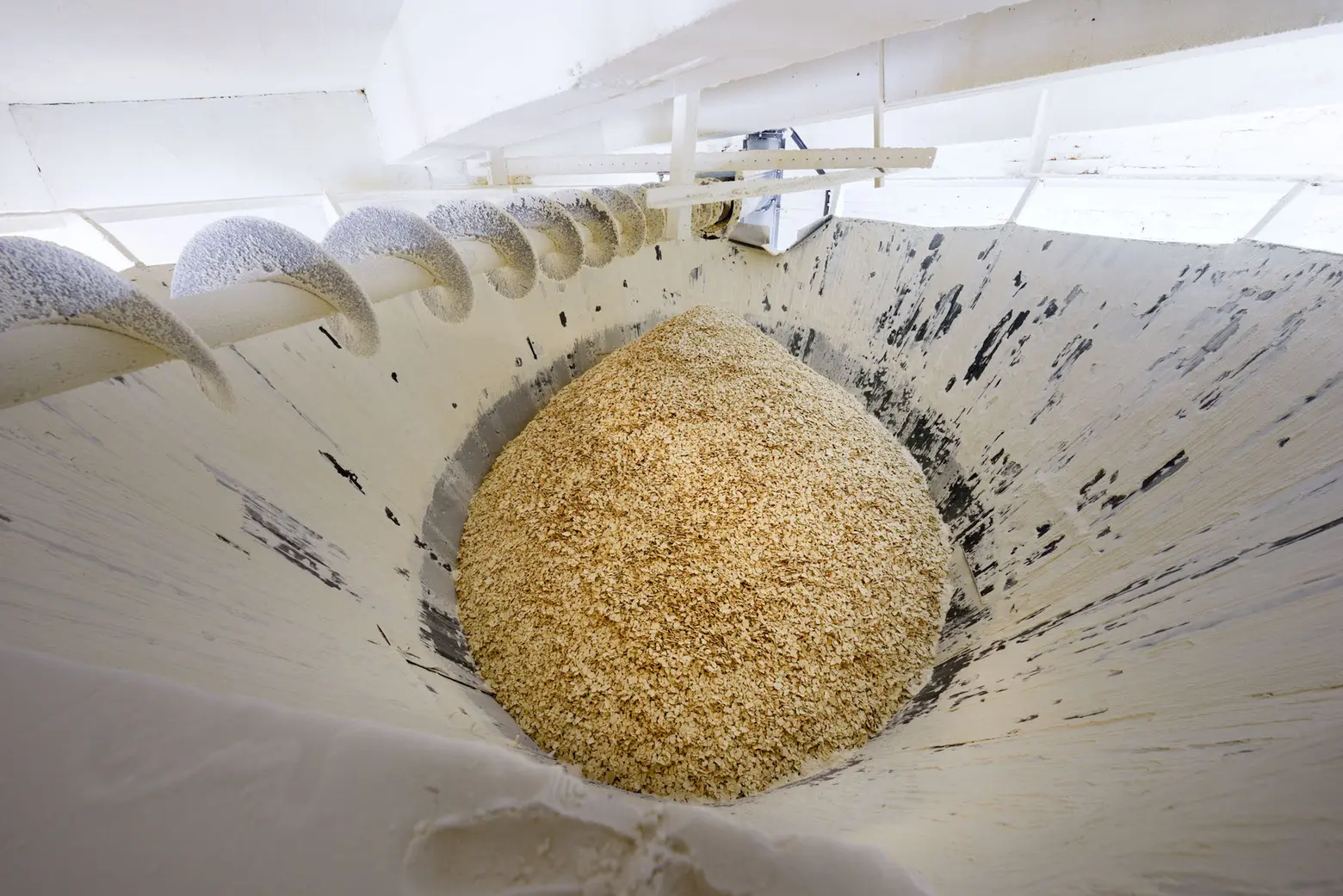
Farfel Matzo; © Joseph O. Holmes
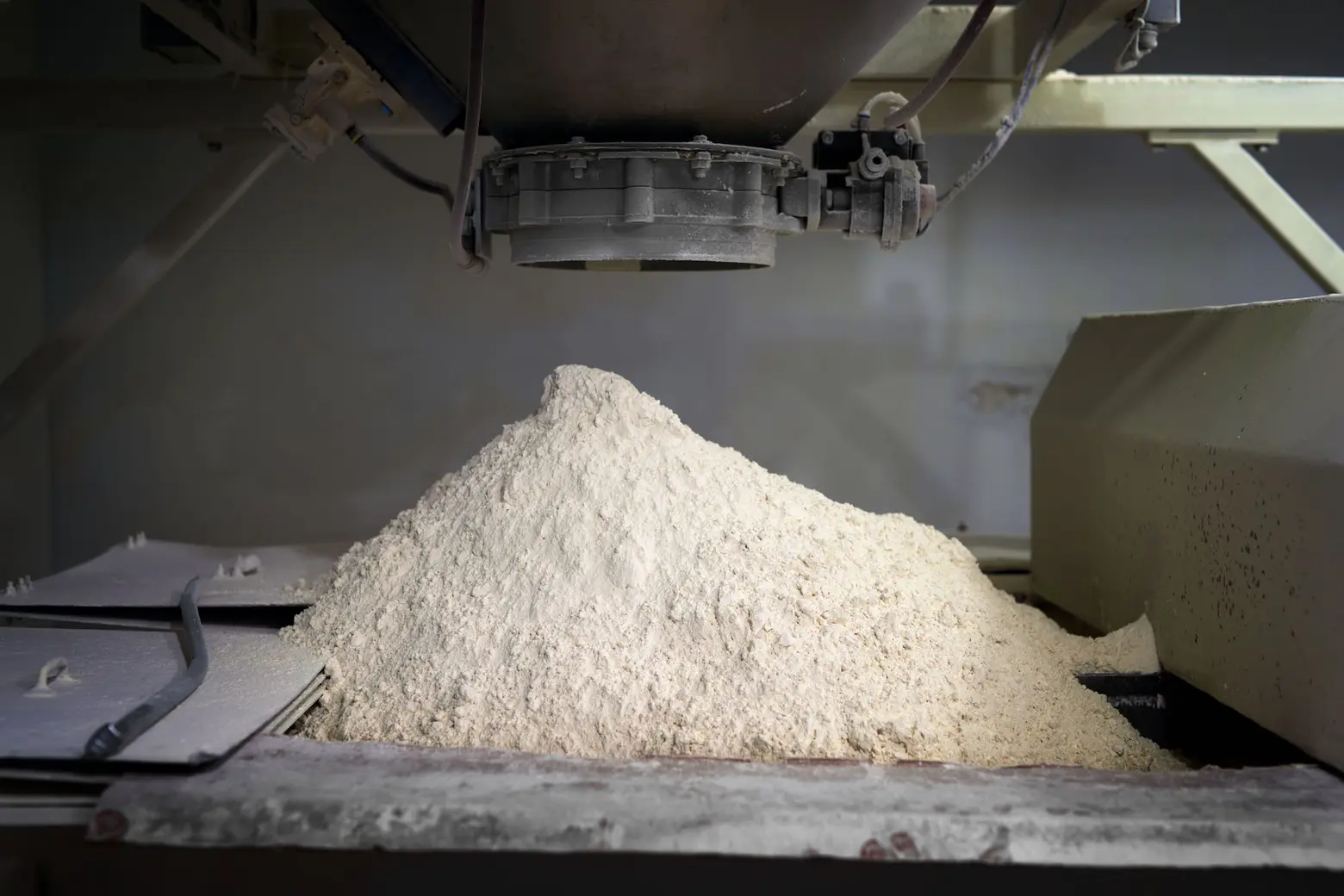
Fith Floor Dumping Station No.1; © Joseph O. Holmes
What did you expect to find inside? Did anything surprise you?
The Streit’s folks were kind enough to give me free rein to explore the entire four-building factory with my camera, but I had no idea that the place was such an enormous maze. After I’d been shooting there for four weeks I would still discover a door or a stairway or a corridor that would lead to a whole new set of rooms.
And it was like a Rube Goldberg machine — hoppers would lead to screw conveyors passing through holes in the walls and floors, leading to mixers and bins and ovens. And everywhere I walked there were stacks of fresh matzo passing overhead in wire baskets on a kind of monorail throughout the floors. Honestly, the place was simply gorgeous.
What do hope these photographs convey?
I’ve always been attracted to the beauty of aging physical machines — whether a machine shop milling machine or a matzo oven. I’m drawn to machines that work in combination with human hands to create tangible things, an increasingly rare sight.
RELATED:
- The LES Site of 90-Year-Old Streit’s Matzo Factory Sells for $30.5 Million
- Rendering, Details Revealed for Glassy Condos Replacing Streit’s Matzo Factory
- Mapping the Evolution of the Lower East Side Through a Jewish Lens, 1880-2014
All photos © Joseph O. Holmes
